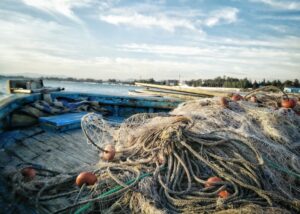We're looking at three amazing medical innovations made possible by plastics.
Plastics improve our quality of life in countless ways - making cars more fuel efficient, medical supplies more durable, and household goods more affordable. While the benefits are extensive, we'd be remiss if we didn't recognize that plastic waste is problematic from an environmental perspective. That's why we are excited to report on innovations happening in plastic recycling, disposal, and other methods that reduce waste, such as enzymes that break down plastic as food to turning plastic into asphalt. Today, our injection molding company is sharing the latest developments in sustainable plastics - polymers that break down when exposed to UV rays, called isotactic polypropylene oxide, or iPPO.
What Is iPPO?
Isotactic polypropylene oxide, or iPPO, was first discovered in 1949, but not much was known about its properties at the time as there were other, more readily available, inexpensive plastics available at the time. However, Cornell University chemists, lead by Bryce Lipinski and Geoff Coates, a professor of chemistry and chemical biology, seeking a solution to minimizing plastic waste in the waterways, redeveloped this polymer over 15 years, specifically focusing on the polymer chains to increase mechanical strength and photodegradation. These factors mean it can be used commercially but it will rapidly break down to ensure it won't accumulate in the environment.
Photodegrading Plastics in Use

One of the concerns of plastic waste is how much of it is in our oceans. Recent studies have estimated that there is approximately 250,000 tons of plastic floating in the water and not decomposing or breaking down. Currently, over half the floating plastic waste in the oceans and waterways can be traced back to commercial fishing. Nets, ropes, and line are primarily made from isotactic polypropylene, high density polyethylene, and nylon-6,6, and these materials end up in the ocean where it can take centuries to break down. Meanwhile, marine life is dying from the plastic waste, either by ingesting it or getting tangled up in it.
While iPPO isn't the first rapidly-degrading plastic, it does have the mechanical strength and functionality necessary to be used in a commercial setting. However, many people ask if it will be stable enough to be used or will it begin breaking down before its usefulness is complete.
Lipinski found that the speed at which the plastic breaks down is dependent on light intensity. While it hasn't been tested "in the wild" yet, so to speak, in lab conditions, the polymer chain lengths broke down to a quarter of their original length after just 30 days. In the high UV-environment of the ocean, there's no reason to think these polymers couldn't be virtually non-existent in fraction of the time as it takes standard polymers and plastics to break down.
Even though this is still in development and it looks to be some time before iPPOs are used on a regular basis, the good news is that this means that an industry that's vital our economy and our food supply can become significantly more sustainable. This innovation, in addition to the variety of improvements in sustainability we've discussed in the past, means that a new age of plastic could be just around the corner.
Learn How Our Custom Plastics Can Improve Your Industry
At Advanced Plastiform, Inc., we provide durable, high-quality plastics with low per-unit costs and quick turnaround times. for a variety of industries across the Southeast and Mid-Atlantic, including North Carolina, South Carolina, Pennsylvania, Maryland, Tennessee, Georgia, and Virginia.. Learn more about how our injection molding and thermoforming services can improve your products and contact us today.
Contact Advanced Plastiform, Inc.
Let Us Know How We Can Help!
"*" indicates required fields

